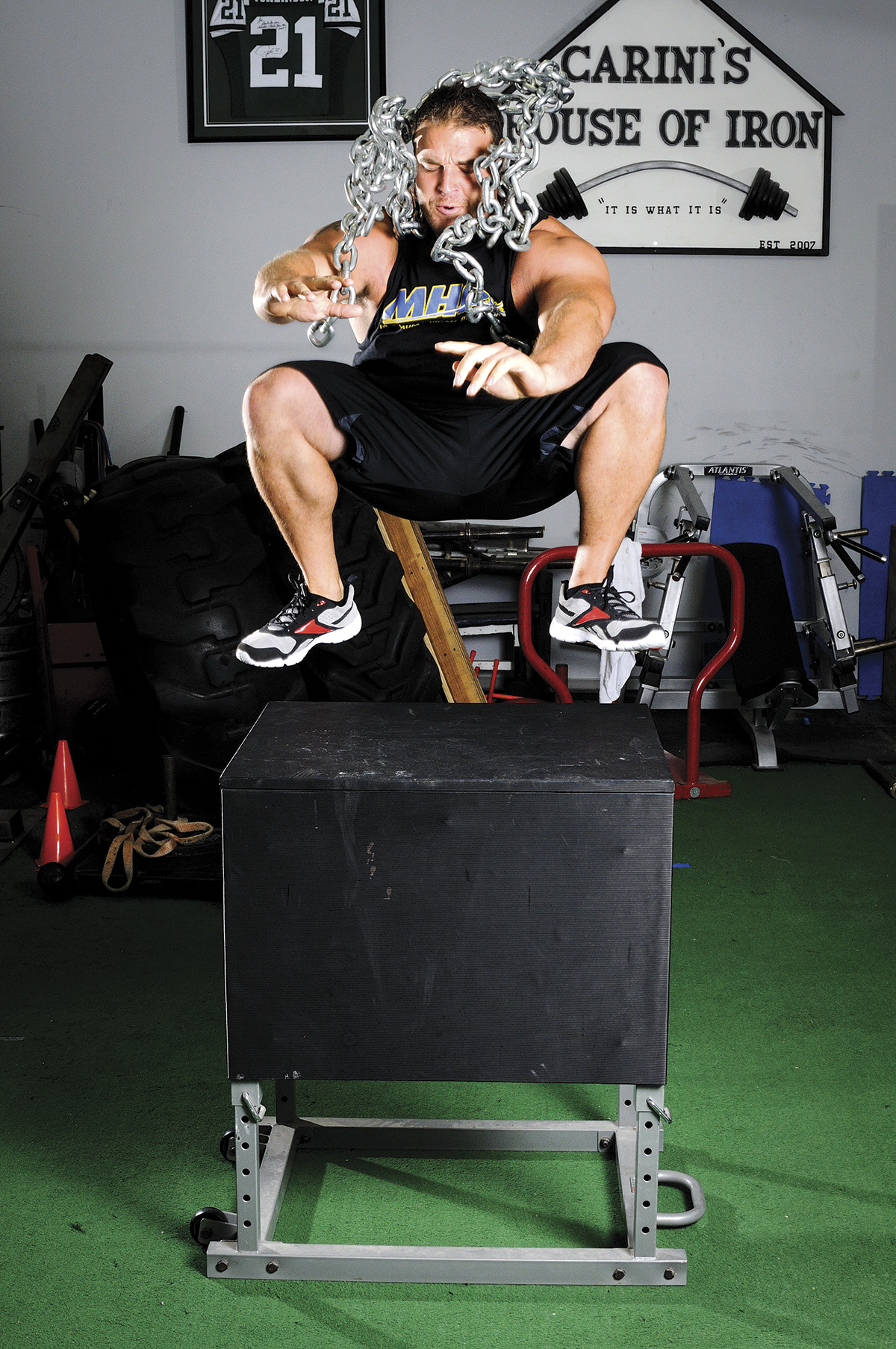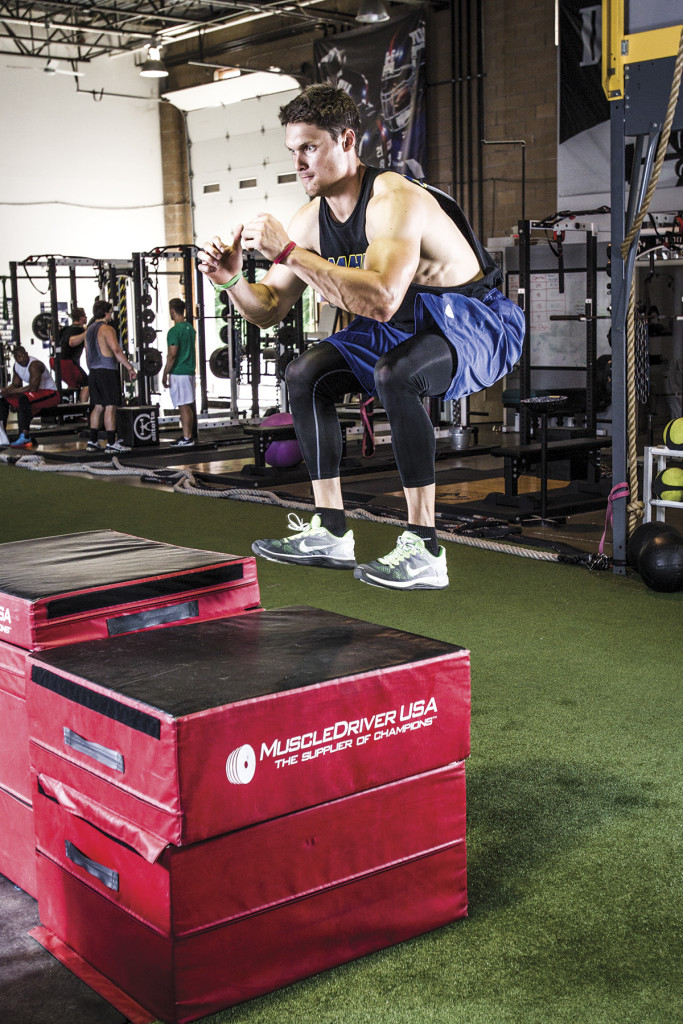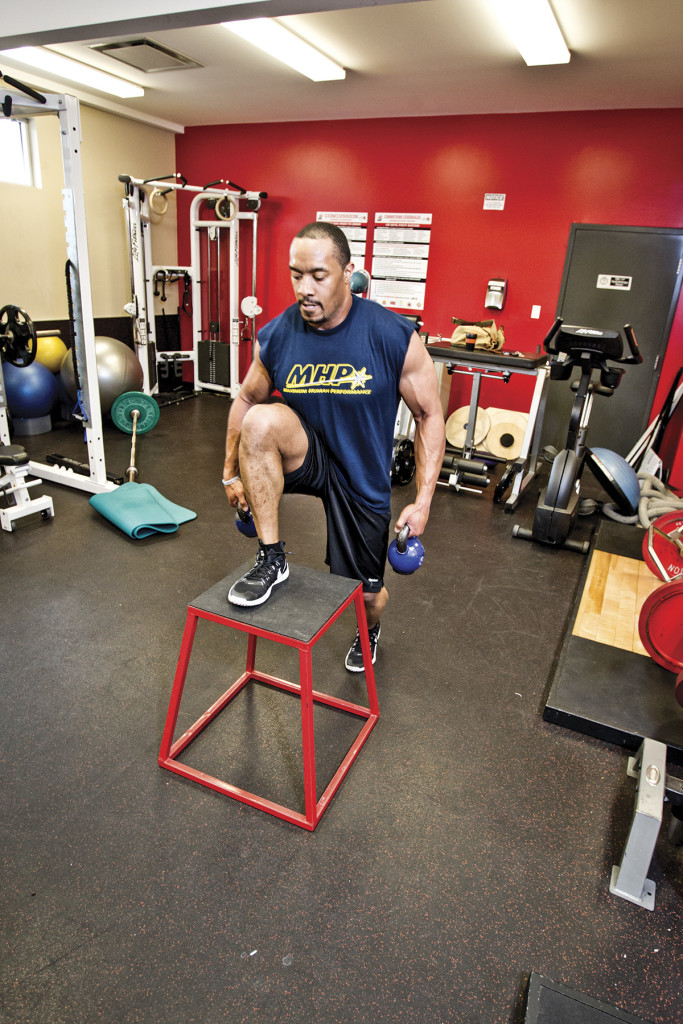This is a great time to be involved in strength and conditioning. More and more lifters are experimenting with exercises that don’t fit the “norm.” Moves such as hang cleans, box jumps, sled pulls, plus various training movements that used to be exclusive to college or professional gyms just a decade ago, are now making their way into gyms across the globe.

Ten years ago, box jumps were only used in sports performance centers as a means to increasing explosive power. Today, they are seen everywhere. Box jumps offer tremendous benefits to building leg strength and power. Unfortunately, as more people start using box jumps, the risk of injury increases drastically. As a strength and conditioning coach, I’ve made mistakes in the past with incorporating box jumps and using it as a means of testing my athletes and clients. Getting an older client who isn’t working out for sports to step out of their comfort zone and challenge their athleticism is a satisfying feeling. However, you must weigh the risk and reward of doing box jumps based on your own program and goals.
Before we get into the risks associated with box jumps, let’s look at the box jump in detail and break it down. To the naked eye, the higher box a person can jump on, the more powerful and explosive they are, right? I won’t argue the athleticism needed to catapult onto a high box, but we need to understand what we are trying to accomplish in the quest to improve power.
For starters, realize that few sports require an athlete to bring their knees up as high as they can. You can look at specific instances like when a football player may need to hurdle over an opposing player or a shortstop jumping over a sliding opponent and attempting to make a double play, but generally speaking, explosion and power is measured on how high an athlete can elevate their hips, not their knees. When a basketball player is jumping up for a rebound, do they need to bring their knees up toward their chest to do so? The answer is no. So when incorporating box jumps with my clients and athletes, I measure the effectiveness of their power output by how high their hips rise as opposed to the height of the box.
Most high-intensity workouts incorporate box jumps for a high number of repetitions. Some would argue that this builds power-endurance (the ability to maintain power output for a prolonged period of time), and I agree to a certain extent, but success here goes back to the risk-and-reward ratio associated with this exercise. Should you take that risk on your 20th box jump, when you’re exhausted and maybe getting sloppy in your form? Unfortunately, I know too many people who took that risk and ended up with painful injuries. (The good news is most exercise equipment manufacturers have begun making soft style boxes that are easier to land on in case of a mistake.)
It’s vitally important to build the necessary strength and technique to jump on a box of reasonable height before advancing to taller boxes or doing a large volume of box jumps. When you leap upward, elevate your hips as high as you can and land in a safe position with your hips back and down, and knees slightly bent. Concentrate on elevating your whole body and not just getting your feet to the height of the box. In addition, landing properly is crucial. Remember, most knee and ankle injuries are a result of someone not landing in a controlled manner and absorbing their forces correctly. In the sports industry, we call that “non-contact injuries.” If you want to train like an athlete, think like an athlete.

Step-ups are an underutilized box exercise that builds leg strength, power, and muscle mass. They employ bilateral (single leg) movement in a repetitive or alternating fashion. Most athletes use single-leg movements in their respective sports. When basketball players go up for layups, they drive up with one leg. When you are running, you are relying on the strength and power from each individual leg to push you forward. Understanding this mechanism is a key role in training and how to design your program.
The concept of “bilateral deficit” is a real thing and understanding what this means can do wonders for your training. The bilateral deficit phenomenon says that you can’t normally produce as much force when two bilateral limbs are performing the exercise simultaneously, as opposed to when we exercise each limb individually and add the force of each side. For example, the sum of our leg press when doing both legs together would be less than the sum of each of your legs if you trained the leg press individually.

One reason why step-ups are so valuable for athletes who focus more on aesthetics than performance is they lack a great deal of eccentric loading. The eccentric component is the act of your muscles stretching or lengthening in order to provide a concentric component, which is the shortening or contracting state of the muscle. When you lower your body in a back squat, you are eccentrically loading your leg muscles, and then driving up and standing is the concentric portion. When you’re stepping up on a box, the only real activity requiring strenuous work is the step-up part. Of course you want to lower down under control, which gives you some stress, but the primary work comes from the concentric motion. Eccentric loading is the reason muscles get sore after training. So you can do a high volume of step-ups and not be wrecked for your next workout.
Step-ups receive a bad rap because they aren’t that appealing and are usually only seen in women’s aerobics classes. Don’t believe this stupidity! Put some weight in your hands and step on a box. Once you master that, grab a barbell and continue the stress. Like I’ve said before, if you want to think like an athlete, you have to train like one. IM





















You must be logged in to post a comment Login